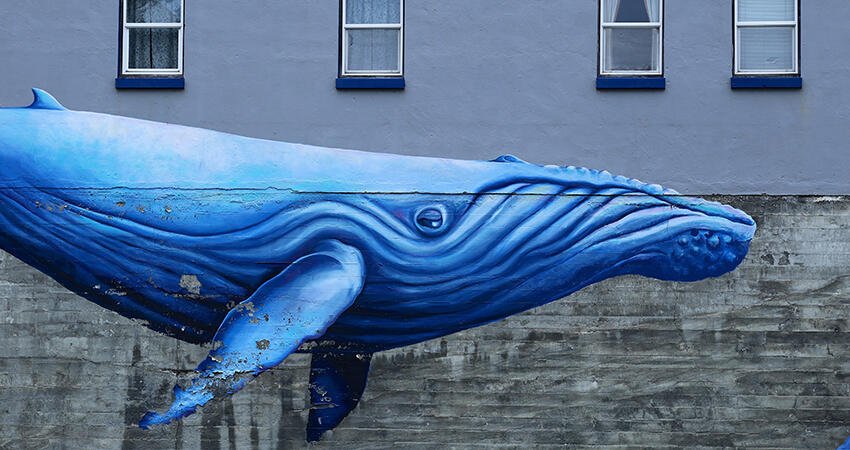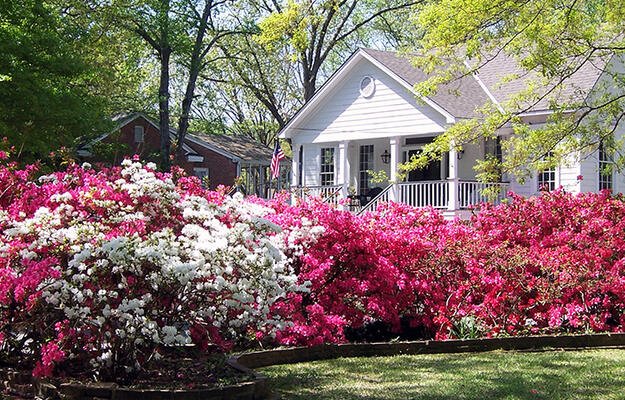
(CSNafzger/Shutterstock)
How Public Art Can Improve Quality of Life and Advance Equity
For many people, our common cultural understanding of the term “art” calls to mind famous works in museums or expensive galleries. But art isn’t exclusive to select spaces or produced by only a few artists. And it isn’t just something beautiful or interesting to look at; it can be a powerful community tool.
Public art, which artists create and locate based on community input, is one way community leaders can improve neighborhoods. It’s a type of placemaking, or a strategy for equitable community development that centers the needs of people and communities in designing shared public spaces.
Although public art can be aesthetically valuable, case studies and research have demonstrated that public art can offer critical benefits to residents, such as improved public safety and well-being. Additionally, the communal nature of public art can give marginalized communities who’ve been historically excluded from the public sphere the chance for self-expression and participation in the arts.
Community leaders seeking to improve public spaces and foster social cohesion among residents should consider supporting and growing local public art projects.
The individual and communal benefits of public art for perceived safety
Residents’ perception of their neighborhood’s safety is linked to quality of life. Safer neighborhoods can lower residents’ risk of exposure to violence and crime and attract new residents and businesses. And research suggests incorporating public art into neighborhood design can improve residents’ perceptions and experiences of safety.
A 2018 case study of the Marcus Garvey Youth Clubhouse in Brooklyn, New York, analyzed how arts and culture programming for young people could be used to revitalize and reimagine community safety. Designing the Clubhouse was a collaborative process involving young people at every step, and it now offers space for young people to congregate, perform music, and create art. Research found the process of collectively engaging with young community members’ needs and empowering them to design and program a public space fostered economic opportunities and improved perceptions of neighborhood public safety.
One study (PDF) of the impact of asphalt art—which combines public art projects with improvements to transportation infrastructure to create installations like intersection murals or crosswalk art—found it led to notable improvements in public safety, with an analysis of 17 crossings and intersections before and after the addition of asphalt art showing a 50 percent decrease in the rate of crashes involving pedestrians or other vulnerable road users, a 37 percent decrease in the rate of crashes leading to injuries, and a 17 percent decrease in the total crash rate.
The effects of public art on health and well-being
Research has also found creating and engaging with art more generally can offer mental and physical health benefits. Public art projects can promote these public health benefits, particularly for residents involved in their creation or for those who can connect to their local community through installations close to their homes. One survey conducted at two public art projects in London’s urban spaces found 84 percent of respondents believed that participating in public art projects on a regular basis benefitted their well-being.
In Philadelphia, the People’s Paper Co-Op redesigns reentry services to improve the well-being of formerly incarcerated people in Philadelphia through arts and cultural activities. Reentering people create artwork that’s disseminated to public spaces and institutions to shed light on the harms of incarceration and disrupt what participants described as “complacency” around the needs of returning people. Because of the public artwork’s ability to impact public perceptions of formerly incarcerated people, program participants saw their art as fueling systems change and reaching audiences with the institutional power to reform criminal justice policies.
Public art can offer inclusionary arts programming
Public art also can be more accessible and inclusive than art in museums and galleries. Because of historical racism and its ongoing legacies, many art museums have generally prioritized the experiences of white artists and audiences over those of people of color. Art museum staff are disproportionately white, with people of color particularly underrepresented in leadership positions. And an analysis of the art in major US museums’ catalogues found 85 percent of artists are white and 87 percent are men. Though many art museums have been taking steps to improve the diversity of their works and their accessibility to broader audiences, barriers to entry still remain, including entry fees, limited hours, and inadequate or uncomfortable seating for people with disabilities. Creating art for a living also often privileges those with preexisting wealth or connections (PDF).
By contrast, public art developed by and for communities could remedy some of these disparities and access issues. In the District of Columbia, the MuralsDC project has worked primarily with local artists to paint murals in each ward that reflect the surrounding community. One mural funded by the project, Language Access for All, celebrates the linguistic diversity of a middle school’s students. Homeless Lives Matter honors and humanizes the community of people who use one of the East Coast’s largest homeless shelters. The MuralsDC project has so far produced almost 150 murals and has engaged hundreds of young people in the artistic process.
Public art can allow historically marginalized and disinvested communities the chance to develop and express local culture and artistic voice. Additionally, placement of the art in or nearby residential areas means residents can easily access and enjoy these artworks daily.
To build equitable communities, community leaders should consider thoughtfully investing in public art
Research on the benefits of public art is promising, but for its benefits to be fully realized, public arts programming needs to be implemented mindfully with an eye toward racial equity. Historically, structural racism in housing and neighborhood development has led to inequitable access to public space and significant disinvestment from neighborhoods of color.
Particularly for historically marginalized communities, public art offers unique benefits. When places experiencing blight or disinvestment are activated by art installations, they can become more frequented and valued. By beautifying previously blighted spaces, public art can reflect residents’ care for their community and encourage stewardship of public spaces. Although low-income neighborhoods and neighborhoods of color are often deprioritized for built-environment enhancements, thoughtful placemaking interventions—like public art initiatives—can revitalize these communities.
Local policymakers can consider creatively leveraging funds to advance equitable public art in their communities. As part of pandemic rebuilding efforts, more than 560 arts organizations nationwide have been allocated American Rescue Plan awards. In Houston, Texas, 12 organizations received awards of at least $50,000 each, including Project Row Houses, which engages neighbors, artists, and enterprises in public art installations and neighborhood development for historically marginalized communities.
Broadly speaking, residents benefit across many different indicators of well-being when they feel connected to their neighborhood through public art. Local community leaders and policymakers who equitably advance public art can improve their residents’ lives and revitalize historically marginalized neighborhoods.


